The story of how the Catholic ascent of Mt Kilimanjaro came to be and the experiences of the climbers, including the Mass of the Ages on the mountain.
From One Peter Five
By Christopher P. Wendt
Editor’s note: DONATE to this worthy cause HERE.
In 2023, I had the honor of being invited by His Excellency Bishop Athanasius Schneider to Tanzania, Africa, specifically to a village called Puma. The purpose of my visit was to witness the deeply traditional Catholic life in the area, particularly at a local monastery, and to see firsthand the plans for the future St. Benedict House of Studies. This house of studies will serve as a place where young men can pursue authentic Catholic priesthood.
What struck me during my visit was the overcrowding at the existing minor seminary. Typically, there should be about 20 students per class, but the most recent class had 90 students, with bunk beds and living quarters crammed to the brim. I observed these conditions as we celebrated the Feast of the Assumption there.
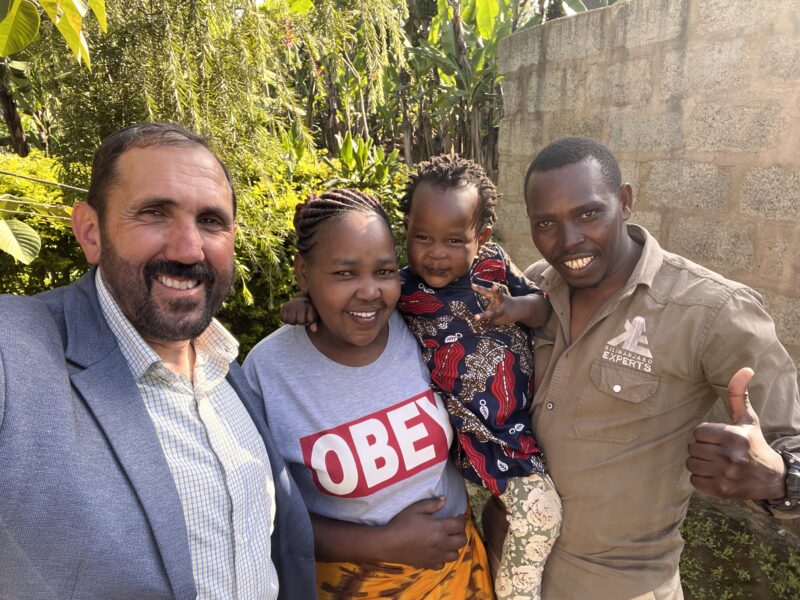
At that time, I was reluctant to take on additional responsibilities, as I was already deeply involved in our work with the Confraternity in the United States and the Philippines. However, it is difficult to decline a request from Bishop Schneider, whose fatherly requests are always so gentle and sincere. He had asked me to help raise the funds needed to build the House of Studies.
While there in Tanzania, on the last day of my trip, I went on a safari, where I saw Mount Kilimanjaro. During this time, I felt a profound sense of responsibility, almost as if it was physically tugging at my soul. It became clear to me that Our Lady was calling me to help make the St. Benedict House of Studies a reality. Despite my initial doubts—wondering how I, not being famous or rich, could possibly raise the million dollars needed for this house of studies — I knew I had to do my part.
As I gazed at Mount Kilimanjaro, I was struck by an idea: climbing this iconic mountain could bring the visibility and attention necessary to raise, if not all, at least a significant portion of the funds needed to support and expand it. This idea planted itself firmly in my mind, and I knew it was the right path forward. So I asked for Fr. Antonius and His Excellency’s blessing on our plans to climb to the top of the Kilimanjaro and then announced it at the 2023 CIC Conference.
What I didn’t know at the time was how high this mountain was – I knew it was high – and how challenging it would be to get to the top, nor did I have an idea about the graces that all of us would receive.
That fall, I embarked on a rigorous training program, focusing primarily on running, but also incorporating hiking and strength training at a local gym. To better understand the challenges ahead, I began watching YouTube videos about the climb and researching the best approach to tackling Kili. I eventually found an excellent outfitter whose methods and philosophy resonated with me.
One of the main challenges of climbing Kilimanjaro is acclimating to the high altitudes. The more days spent on the mountain, the greater the chances of successfully reaching the summit. Our outfitter offered an eight-day climb, boasting a success rate of 80%. It was clear this was the best route to take.
During my training, I envisioned making this climb a truly traditional Catholic experience, with daily Latin Mass. To achieve this, we needed to find a Traditional Latin Mass (TLM) priest who was also eager to hike one of the Seven Summits. For several months, I struggled to secure a priest, researching those who had previously celebrated the Latin Mass on Kili. I discovered that in recent years, both a priest from the Priestly Fraternity of St. Peter (FSSP) and a traditional Dominican had offered the TLM on the mountain. Although we weren’t the first, I see that we are part of a new trend of interest in bringing the Mass of the Ages to some of the remotest places in the world.
Eventually, Father João Silveira, a priest from the Missionaries of the Holy Cross—the same order that runs the St. Benedict House of Studies— found out about it and reached out to be our chaplain. He turned out to be a tremendous blessing, a model priest who wore his cassock all the way to the summit and down again. That witness alone would have made it all worth it.

As you prepare for the climb, there’s always a lingering thought in the back of your mind: the possibility that you might not reach the summit. It’s not a question of training or determination but rather the reality that your genetics might simply prevent you from acclimating to the thin air 18,000 feet above the comfort of your home. Early on, I prepared myself mentally by acknowledging the mountain for what it truly is—a formidable force of nature that ultimately decides whether or not you will reach the top. This realization fostered a deep respect for Kili within me.
As I ascended higher and higher, the challenge posed by the mountain—and its immense power—became increasingly apparent. My respect for Kilimanjaro grew with each step. In a sense, I entrusted the outcome of the climb to Our Lady’s will, accepting that whether I reached the summit or not was beyond my control and entirely in her hands.
Finally, in mid-July, the day arrived for us to begin our climb. Gathered together at our hotel in Arusha, I was truly amazed as I looked around at the group that Our Lady had assembled. Every member was an active climber and hiker, a devout traditional Catholic, and each person approached this climb as a true Catholic pilgrimage. The shared desire to help build and sacrifice for the seminarians, to ensure they could have their House of Studies, united us all. There was a collective longing to experience traditional Catholicism in Tanzania, and it was clear that Our Lady had brought us together. It is true that we will forever be brothers and sisters, bonded by the joys and sufferings we endured together during this challenge.
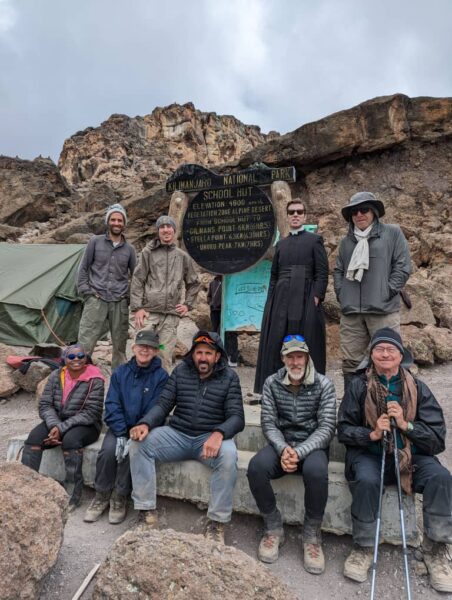
On our first day, we began the Climb in the jungles, surrounded by blue monkeys and an endless canopy of trees. The hiking was as expected—walking, carrying a backpack, and moving “pole, pole” (“slowly, slowly”). What I did not anticipate, however, was the profound beauty of attending the Latin Mass once we reached camp. That first night, we set up for Holy Mass in our mess tent—the same place where we would later eat dinner. As the camp sacristan, I did my utmost to create a reverent and beautiful altar, complete with altar cloths, an antimension, a crucifix, and candles.
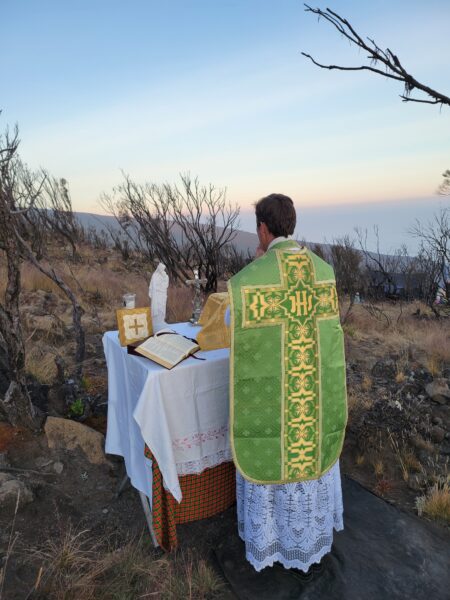
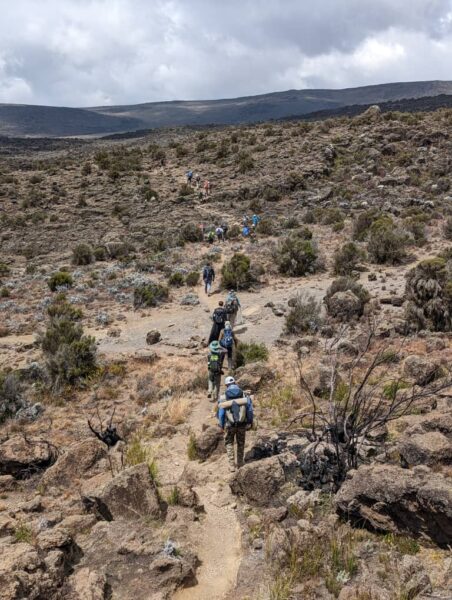
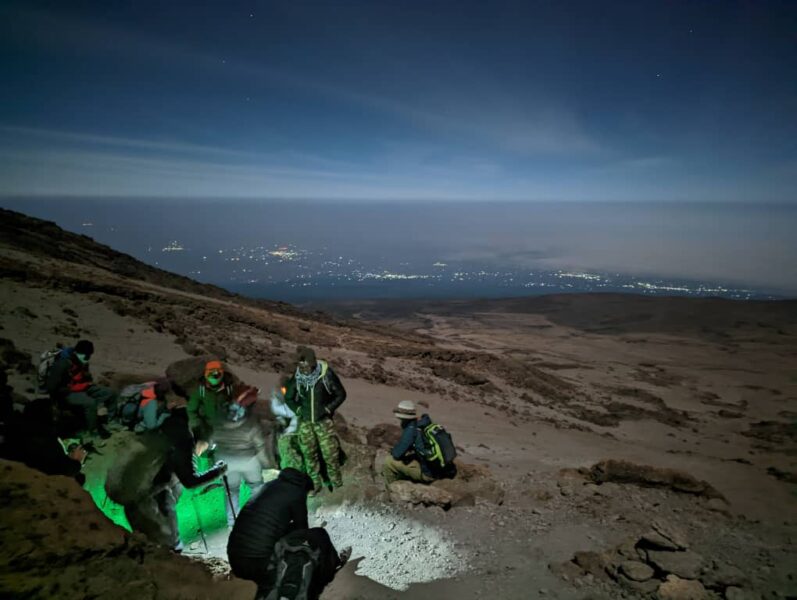
Day after day, we celebrated Holy Mass in the mess tent or out in the open air. With each passing day, I found myself drawn deeper into the Holy Sacrifice and the words of the Mass, plunging further into its sacred mystery. This was the first time I had the privilege of attending the Traditional Latin Mass daily for a full week, and it left an indelible mark on my soul. I will never be the same, and I will never view the Holy Mass in the same way again. Even as I write this, I can still feel the grace lingering in the recesses of my soul. Jesus and Mary drew me into the Sacrifice, where Our Lady, as Co-Redemptrix, offers her Son, and where Our Lord is the Sacrifice. This profound exchange of love between them, and for us, was something I could witness. I realized I could place my small penances from the climb within their embrace and unite them with their Sacrifice. Then I could embrace Jesus and Mary – all three of us together.

What surprised me most about the climb was summit night itself and its exacting demands. Summit night is the pinnacle of the entire journey—the moment we’ve been preparing for. The ascent begins at midnight, under the cover of darkness, because it takes six to seven hours to reach the summit from base camp, and you want to arrive there in daylight. Equipped with a headlamp, you start the steep ascent, moving pole pole, eyes fixed on the feet of the person in front of you. The temperatures are well below 0°F, and as you climb, the air becomes thinner, making every breath a struggle. The higher you go, the dizzier and more disoriented you feel, and the colder it gets. You watch as your water bottle or camelback line freezes instantly.
The lack of oxygen is overwhelming, and your heartbeat races as if you’re jogging, leaving you out of breath after just a few steps. And this continues for six grueling hours. Rest too long, and you risk hypothermia; go too fast, and you’ll need to rest. The guides expertly find a pace that suits the group. By six o’clock in the morning, the sun begins to rise above the clouds in a spectacular display that most people only witness from a plane, signaling that you’re getting closer to the top.
During this mental fog, it’s nearly impossible to pray a full Rosary. Instead, you find yourself repeating simple phrases like “Jesus, Mary, get me there” or “¡Viva Cristo Rey!”—the latter being something I believe my good friend Michael Matt exclaimed at one point. It still gives me goosebumps to think about it.
As you continue, you eventually pass Gilman’s Point and finally reach Uhuru Peak, marked by its famous sign. At that moment, your heart swells with an earthly joy—relief that you made it to the top and gratitude for the grace Our Lady bestowed upon you to reach it. You feast your eyes on the breathtaking views from the summit. Yet, there’s a certain irony and anticlimax in the fact that you can only stay there for 10 to 20 minutes. The lack of oxygen makes a quick descent necessary, and the peak itself is crowded with others who have also made it, all eager to capture the moment with a picture in front of the sign.
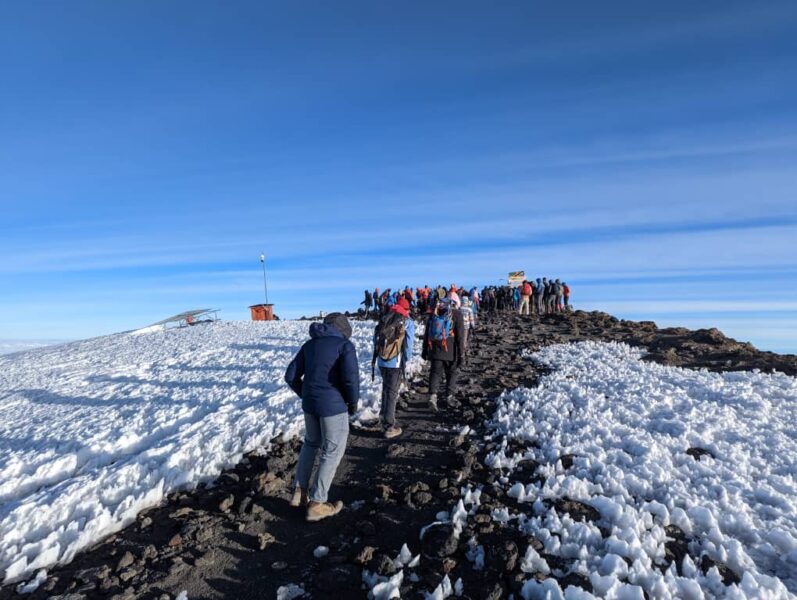
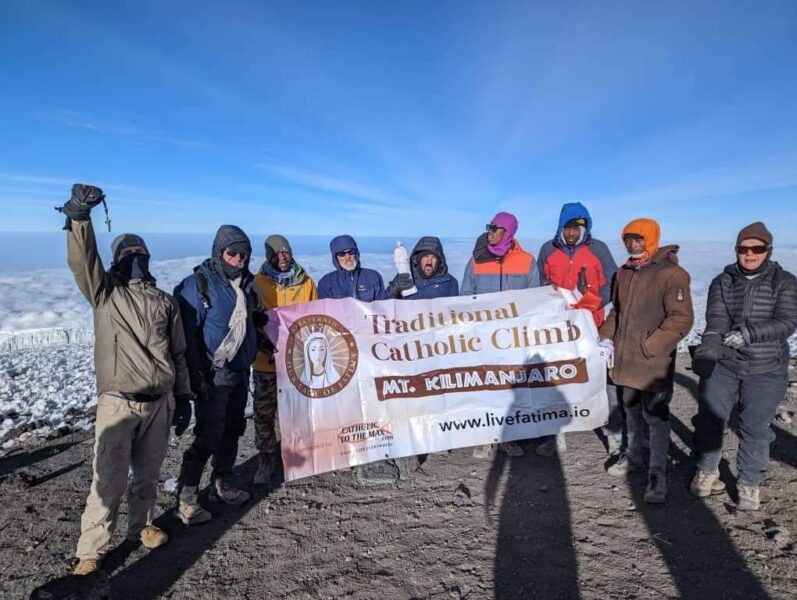
The day before, I had tried to imagine what it would be like to reach the summit, envisioning us singing the Salve Regina together, as we did at the end of every Holy Mass. But nothing could have prepared us for the reality of that summit. Most of us were too exhausted to sing, and even taking a group picture was a challenge. From the very beginning, my goal had been to claim Kili for Our Lady and to extend the Reign of Mary. I had even brought a small statue of Our Lady, which I held in the picture. But in the end, all I could manage was to silently say for all of us the words of St. Louis de Montfort, “Adveniat Regnum Mariae” in my heart before we had to begin our descent.
In the end, we accomplished what we set out to do – raise enough funds to help cover 20% of the cost of building the St. Benedict House of Studies, which will open in the new year. It will take me months to sort through the spiritual treasure that we all received from that Climb. I know I am leaving out so many things in this brief article, but I am sure that I got the main point right – what a beautiful and inestimable treasure the Mass of the Ages really is.
No comments:
Post a Comment
Comments are subject to deletion if they are not germane. I have no problem with a bit of colourful language, but blasphemy or depraved profanity will not be allowed. Attacks on the Catholic Faith will not be tolerated. Comments will be deleted that are republican (Yanks! Note the lower case 'r'!), attacks on the legitimacy of Pope Leo XIV as the Vicar of Christ, the legitimacy of the House of Windsor or of the claims of the Elder Line of the House of France, or attacks on the legitimacy of any of the currently ruling Houses of Europe.